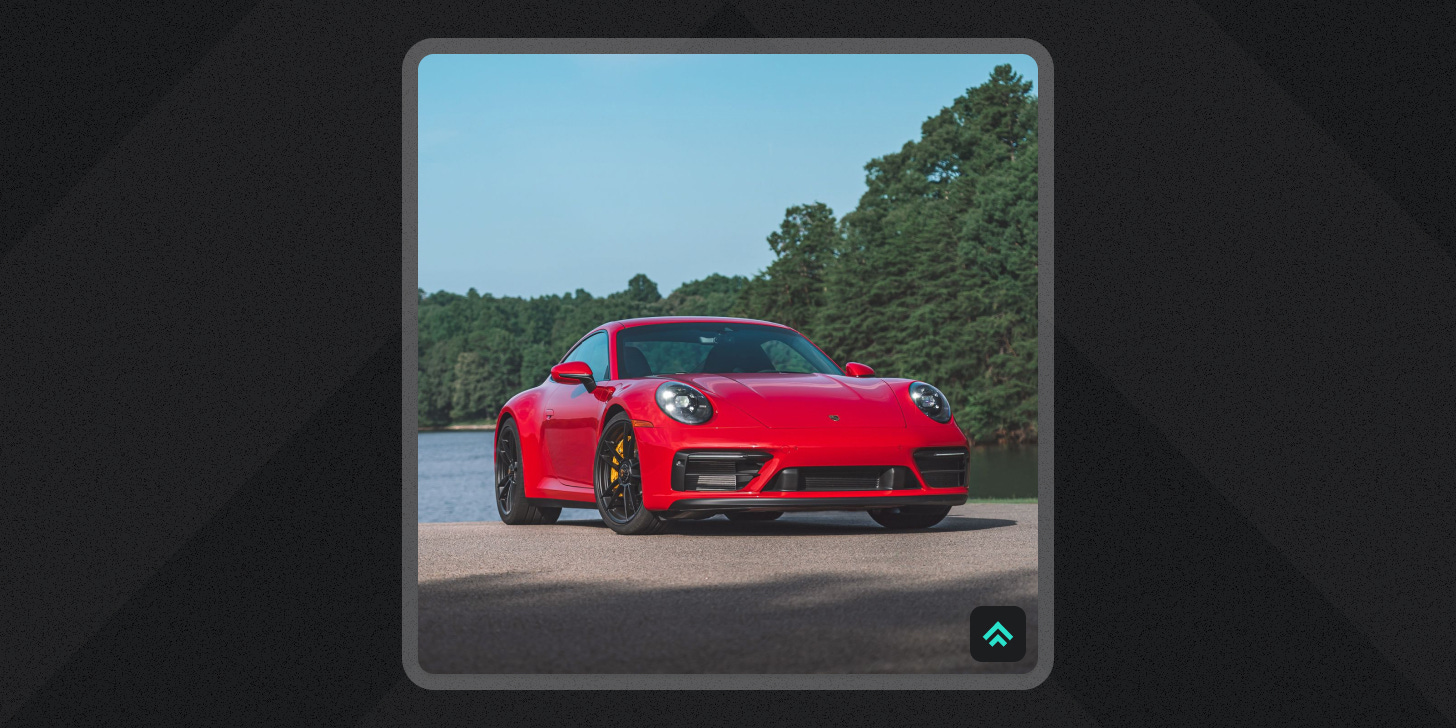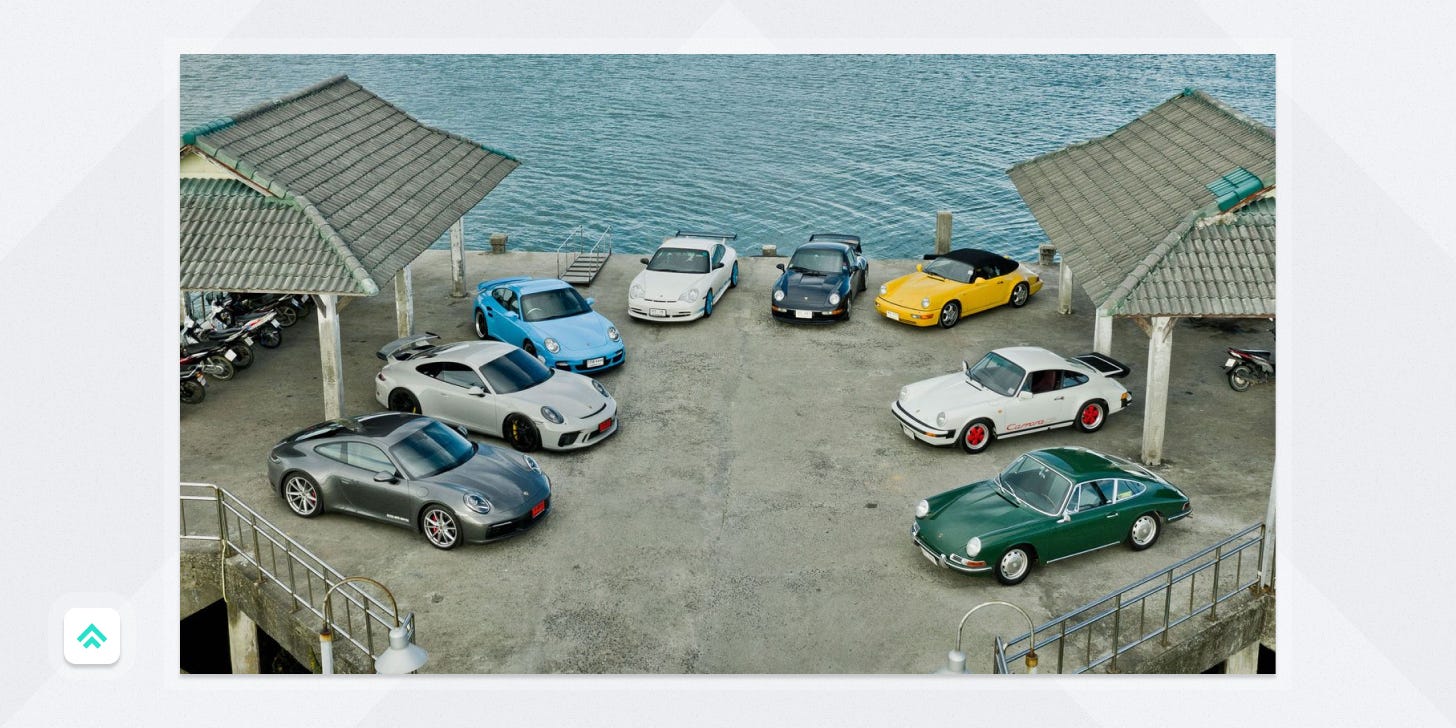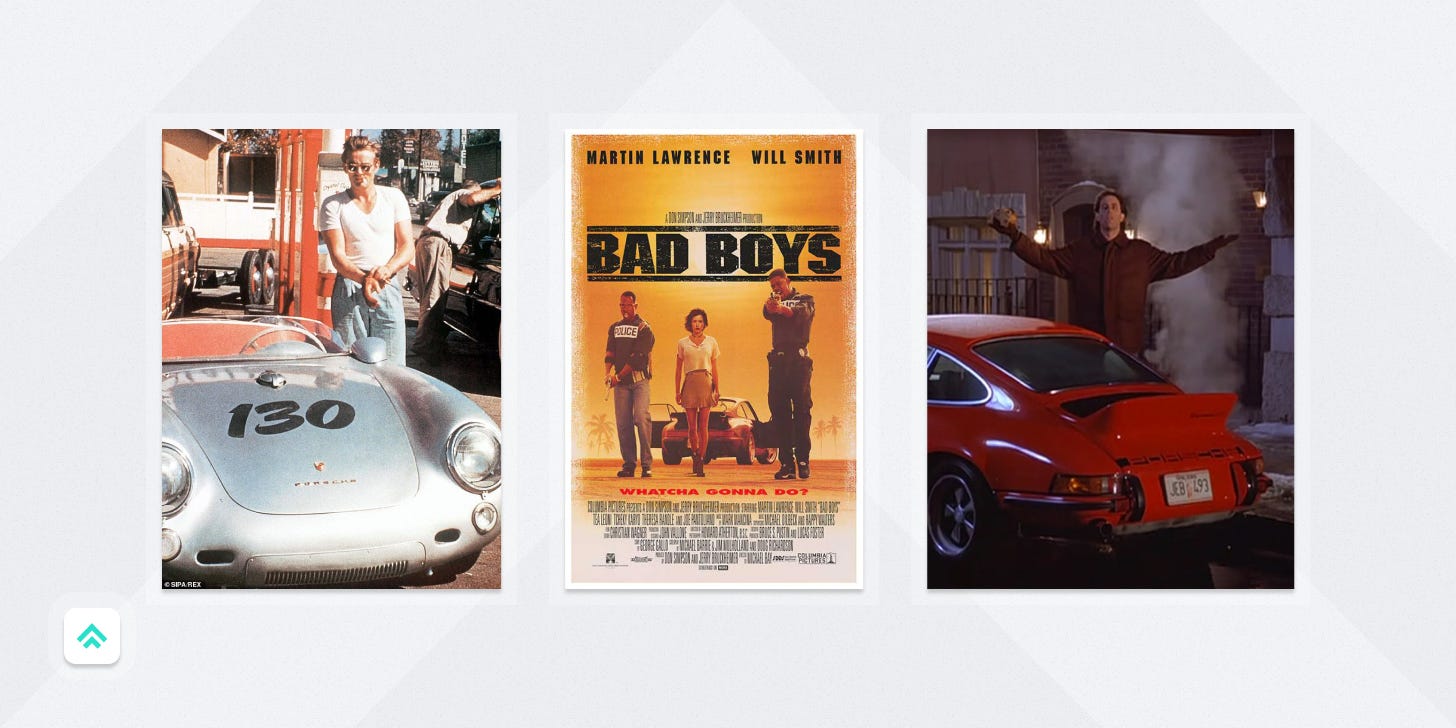Porsche 911: A Dream in the Shape of a Sports Car
Uncovering the key elements that define the sports car's timeless allure

Leonardo da Vinci was considered first an artist, then an engineer. What is your opinion, Dr. Porsche?
“Is there any difference?”
Introduction
When you think of a sports car, what shape comes to mind?
If you’re like me, there’s only one answer: Porsche. And specifically, the Porsche 911.
I’m not a “car guy” (I drive a pretty sweet 7-year-old Mazda if you’re wondering), and yet the 911 has tugged on my aspirational heartstrings for the better part of my life.
Why?
What about it is so enticing?
Why is it so culturally significant despite the company being close to 100 years old?
And what exactly makes it better by design?
Let’s dig in.

History
Porsche has a fascinating history. In fact, to learn about the company is to learn about much of German automotive history.
The story starts with Ferdinand Porsche in the late 1800s. Ferdinand was intrigued by electricity at a young age which drove him to pursue an education in engineering.
In 1898, he contributed to developing an early electric car, the Egger-Lohner C.2. Phaeton (take that, Tesla!). In 1906, he joined Austro-Diamler (a predecessor of Mercedes Benz) as their chief designer. In 1931, he founded the company that would become today’s Porsche. And finally, in 1934, he received the contract to develop the first designs of the Volkswagen car which he worked on with his son.
We see the beginnings of what resembles the Porsche we know today in the early 1950s under the guidance of Ferdinand’s son, Ferry Porsche.
The first car to break through for Porsche in the 50s was the 356. Interestingly, it took some of the same innovations used in the Volkswagen but put them into the body of a sports car (namely, the air-cooled rear engine). The company continued to grow on the success of the 356 over the course of the 50s, setting up the opportunity to make a big splash with its successor in the early 60s. That car? The 911.
In the decades since it was introduced in 1963, Porsche has produced more than a million units of the 911 and it’s one of the few car designs that even auto enthusiasts will admit deserves the use of the “i” word: iconic. It pulls off a rare combination of stellar product design and compelling branding that somehow makes its eye-watering prices seem worth it (starting at just $106,100 in 2023… 🥲).
So today, we’re counting not just the ways the 911 delivers on the principles of good product design, but also how its branding delivers on the principles of good advertising.
Product
Okay, so Porsche was important to German automotive history and the 911 is their most iconic design… but what makes its design so good? Let’s count the ways…
It’s innovative
While the 911 has no shortage of interesting innovations I could mention, the biggest differentiator is still the rear engine. It’s funny how a simple decision about engine placement might change the driving experience so fundamentally, but sitting in front of the engine just feels different than sitting behind it; you’re getting propelled forward into space rather than getting dragged along through it.
The engine placement improves the weight distribution of the vehicle as well as its cornering speed giving it an agile feel and a “grip” on the road that’s hard to beat.
It’s useful
“The 911 is the only car that you can take on a safari through Africa, compete in the 24 hours of Le Mans and go to the theatre and drive through the streets of New York.” - Ferry Porsche
For a supercar, the 911 is surprisingly drivable.
As Ferry says, it’s a car that is somehow equally at home on the track and the city streets (I’m not sure I’d take one on a safari though… 🤣).
Despite its wicked performance, its form is subdued and elegant enough to be driven around by a normal person not just a race car driver.
It’s aesthetic
For me, the 911 represents the peak of automotive aesthetics.
The silhouette is so simple and yet it’s one of the few car shapes that you could put on the wall unlabeled and almost everyone would be able to identify it.
It’s a shape that at this point is basically synonymous with “sports car” which I think represents the pinnacle of aesthetic influence.
It’s long-lasting
The design of the 911 is timeless.
The long flat hood, the steep windscreen, and the rounded-off back end are all present in the earliest days of the vehicle over 60 years ago and are still as powerful as ever in 2023.
The core design is somehow opinionated enough to be immediately recognizable and also subdued enough to allow individuals to modify it while retaining its character, making it a very resilient design over time.
It’s thorough down to the last detail
The 911 is luxurious in its attention to detail.
Things like its comfortable interior, good visibility, and trunk space in the front all add up to make a unique and exceptional driving experience out of something that could have been just another powerful race car.
It’s that consistent attention to detail and quality that’s allowed Porsche to differentiate itself in the market for so many decades and earn its place atop the public imagination.
Brand
While on the product side, I love to use Dieter Rams’ 10 Principles to evaluate products, on the brand side, I don’t have an immediate go-to. So until I discover my favorite set, we’re going to experiment. Today we’re starting with none other than some sage wisdom from the proprietor of my advertising alma mater, Leo Burnett.

“Make it simple. Make it memorable. Make it inviting to look at. Make it fun to read.”
Porsche has a strong history in print advertising with an early 90s campaign from Fallon leading the way. There are so many good examples from that campaign that it was hard to pick just two, but you’ll get the idea.
They’re very simple with punchy, memorable headlines that grab your attention. The car itself is featured prominently which makes the ads inviting to look at without needing to include any other major visual elements. In the ad on the right, it uses the car in its red colorway to draw the attention of the eye even more. Finally, the small body copy is fun. The writers injected it with a personality that backs up the headlines and builds your idea of the kind of person who might purchase the vehicle.
Altogether, the campaign blends into a mix of dreamy aspiration and fun that just makes me want one so badly! No need for modern, clickbait-y tactics. Just impeccable brand advertising for a top-shelf product.
“Good advertising does not just circulate information. It penetrates the public mind with desires and belief.”
Porsche doesn’t own the mindshare it does just by way of making snappy print ads. They’ve deeply embedded themselves into the public imagination through years of seamless integration into pop culture.
This surfaces in a number of areas:
Racing
From its legacy of excellence at the famous endurance race Le Mans to the illegal street racing scene in Japan, Porsche has stayed squarely in the mix when it comes to performance racing.
Film
Whether it’s Steve McQueen as a race car driver, Will Smith in Bad Boys, or Tom Cruise doing Tom Cruise things in Top Gun, Porsche pops up often in film.
Celebrity
Honestly, what celeb hasn’t been photographed with a Porsche? Just do a google image search for “Celebrities with Porsche” and scroll away.
Art
Exhibits like the current one from Daniel Arsham at the Petersen Museum in LA reinforce the influence of Porsche aesthetics.
Takeaways
I’ll leave you with this; to me, the biggest takeaway from the 911 is how quality begets quality.
On the product side, the car is a design and engineering marvel. It nails many of the principles of good design and has proved to be remarkably consistent in its excellence over the years.
That consistent quality allows the product to command a premium spot in the marketplace. It inspires a certain kind of lifestyle to grow around it and a certain kind of customer to seek it out. This results in naturally earned publicity even before you add any advertising spend into the mix.
Finally, the brand campaigns top it off by growing the legend. As Leo Burnett put it, they didn’t just “circulate information”, they hit us right in our beliefs and desires. I could easily have been the daydreaming kid in the video ad shared above, longing for the day when his boyhood dream might become reality.
The 911 isn’t just a car, it’s a realized dream. Now that’s a powerful message.
That’s better by design.
If you got a little value from this post, consider subscribing, sharing, or following me on Twitter. If you got a lot of value, consider pledging to support my work with a paid subscription in the future. Either way, I appreciate you!







